 W
WThis list of aviation awards is an index to articles about notable awards given in the field of aviation. It includes a list of awards for winners of competitions or records, a list of awards by the Society of Experimental Test Pilots, various other awards and list of aviation halls of fame.
 W
WThe Order of Aeronautical Merit is an award of the Brazilian Air Force, established on 1 November 1943 by President Getúlio Vargas. The order is presented in five grades and recognizes distinguished service and exceptional contributions to the Brazilian Air Force.
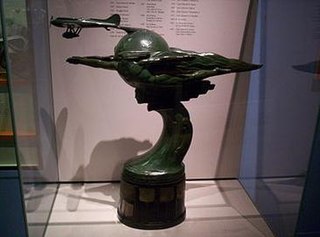 W
WThe Bendix Trophy is a U.S. aeronautical racing trophy. The transcontinental, point-to-point race, sponsored by industrialist Vincent Bendix founder of Bendix Corporation, began in 1931 as part of the National Air Races. Initial prize money for the winners was $15,000. The last Bendix Trophy Race was flown in 1962.
 W
WThe Cheney Award is an aviation award presented by the United States Air Force in memory of 1st Lt. William H. Cheney, who was killed in an air collision over Foggia, Italy on January 20, 1918. It was established in 1927, and is awarded to an airman for an act of valor, extreme fortitude or self-sacrifice in a humanitarian interest, performed in connection with aircraft, but not necessarily of a military nature.
 W
WThe Robert J. Collier Trophy is an annual aviation award administered by the U.S. National Aeronautic Association (NAA), presented to those who have made "the greatest achievement in aeronautics or astronautics in America, with respect to improving the performance, efficiency, and safety of air or space vehicles, the value of which has been thoroughly demonstrated by actual use during the preceding year."
 W
WThe Coupe Deutsch de la Meurthe was an international aeronautical speed competition instituted on 25 August 1909 by the French oil magnate Henry Deutsch de la Meurthe. The race was reinstated three times through the years at the initiative of the Aéro-Club de France, and later by Deutsch de la Meurthe's daughter Suzanne.
 W
WBetween 1906 and 1930, the Daily Mail newspaper, initially on the initiative of its proprietor, Alfred Harmsworth, 1st Viscount Northcliffe, awarded numerous prizes for achievements in aviation. The newspaper would stipulate the amount of a prize for the first aviators to perform a particular task in aviation or to the winner of an aviation race or event. The most famous prizes were the £1,000 for the first cross-channel flight awarded to Louis Blériot in 1909 and the £10,000 given in 1919 to Alcock and Brown for the first non-stop transatlantic flight between North America and Ireland.
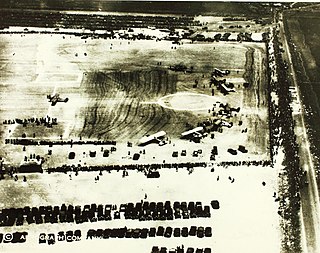 W
WThe Dole Air Race, also known as the Dole Derby, was a deadly air race across the Pacific Ocean from Oakland, California to Honolulu in the Territory of Hawaii held in August 1927. There were eighteen official and unofficial entrants; fifteen of those drew for starting positions, and of those fifteen, two were disqualified, two withdrew, and three aircraft crashed before the race, resulting in three deaths. Eight aircraft eventually participated in the start of the race on August 16, with only two successfully arriving in Hawaii; Woolaroc, a Travel Air 5000 piloted by Arthur C. Goebel and William V. Davis, arrived after a 261⁄4-hour flight, leading runner-up Aloha by two hours.
 W
WThe European Flight Test Safety Award was created after the fatal accident of test pilot Gérard Guillaumaud by his fiancée Heidi Biermeier. The regulations of the award state that recipients must be individuals who made significant contributions in the area of safety within flight testing.
 W
WThe General Aviation Awards Program is an American program organized by Federal Aviation Administration (FAA) and a large number of general aviation industry sponsors. The awards, presented annually for more than 50 years, recognize individual general aviation professionals on the local, regional, and national levels for their contributions to aviation, education, and flight safety.
 W
WThe Gordon Bennett Aviation Trophy was an international airplane racing trophy awarded by James Gordon Bennett Jr., the American owner and publisher of the New York Herald newspaper. The trophy is one of three Gordon Bennett awards: Bennett was also the sponsor of an automobile race and a ballooning competition.
 W
WThe Harmon Trophy is a set of three international trophies, to be awarded annually to the world's outstanding aviator, aviatrix, and aeronaut. A fourth trophy, the "National Trophy," was awarded from 1926 through 1938 to the most outstanding aviator in each of the twenty-one member countries and again from 1946–1948 to honor Americans who contributed to aviation. The award was established in 1926 by Clifford B. Harmon, a wealthy balloonist and aviator.
 W
WThe Igor I. Sikorsky Human Powered Helicopter Competition was established in 1980 by the American Helicopter Society (AHS) International. The award, the AHS Sikorsky Prize, was given for the first human powered helicopter (HPH) to meet a set of extremely challenging flight requirements. In summary, the requirements to win the AHS Sikorsky Prize included a flight duration of 60 seconds and reaching an altitude of 3 meters, with the center point of the aircraft hovering over a 10-by-10-metre square.
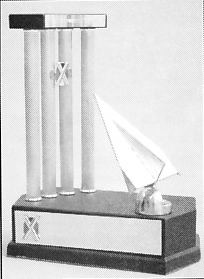 W
WThe Iven C. Kincheloe Award recognizes outstanding professional accomplishment in the conduct of flight testing. It was established in 1958 by the Society of Experimental Test Pilots in memory of test pilot and Korean War ace Iven C. Kincheloe, United States Air Force, who died during flight testing.
 W
WThe James H. Doolittle Award is an honor presented annually by the Society of Experimental Test Pilots. It is an award for "outstanding accomplishment in technical management or engineering achievement in aerospace technology". The award consists of a perpetual trophy on permanent display at SETP headquarters, and a smaller replica presented to the recipient. It is named after General James Doolittle, famous for the Doolittle Raid on Tokyo during World War II.
 W
WLilienthal Gliding Medal – the highest soaring award in the world, established by Fédération Aéronautique Internationale (FAI) in 1938 in honor of Otto Lilienthal, a German pioneer of human aviation. It aims "to reward a particularly remarkable performance in gliding, or eminent services to the sport of gliding over a long period of time". The award is made at the annual FAI General Conference. Medal was designed by Austrian artist Josef Humplik.
 W
WThe Louis Blériot medal is an aviation honor awarded by the Fédération Aéronautique Internationale (FAI), the international aviation record adjudicating body. The medal may be awarded up to three times every year to record setters in speed, altitude and distance categories in light aircraft. The award was established by 1936 in honor of Louis Blériot.
 W
WThe Mackay Trophy is awarded yearly by the United States Air Force for the "most meritorious flight of the year" by an Air Force person, persons, or organization. The trophy is housed in the Smithsonian Institution's National Air and Space Museum. The award is administered by the U.S. National Aeronautic Association.
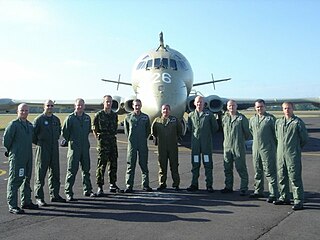 W
WThe Maintenance Trophy is awarded by Lockheed Martin and was introduced in 1996 at the Fincastle competition.
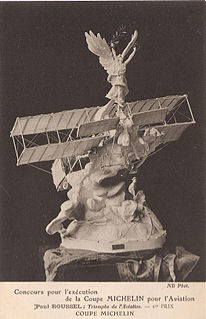 W
WThe Michelin Cup refers to a number of competitions sponsored by the French tyre manufacturer Michelin for long distance flight made in aeroplanes.
 W
WThe Onizuka Prop Wash Award recognizes the student at the United States Air Force Test Pilot School who contributed most to class spirit and morale. The honoree from each class is selected by his or her fellow students rather than by school faculty. The award is named in memory of TPS graduate Ellison Onizuka who perished in the explosion of the Space Shuttle Challenger in 1986.
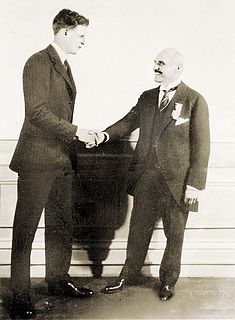 W
WThe Orteig Prize was a reward offered to the first Allied aviator(s) to fly non-stop from New York City to Paris or vice versa. Several famous aviators made unsuccessful attempts at the New York–Paris flight before the relatively unknown American Charles Lindbergh won the prize in 1927 in his aircraft Spirit of St. Louis. However, a number of lives were lost by men who were competing to win the prize. Six men died in three separate crashes, and another three were injured in a fourth crash. The Prize occasioned considerable investment in aviation, sometimes many times the value of the prize itself, and advancing public interest and the level of aviation technology.
 W
WThe Coupe d'Aviation Maritime Jacques Schneider, also known as the Schneider Trophy, Schneider Prize or Schneider Cup was a trophy awarded annually to the winner of a race for seaplanes and flying boats. The Schneider Trophy is now held at the Science Museum, South Kensington, London.
 W
WThe Segrave Trophy is awarded to the British national who demonstrates "Outstanding Skill, Courage and Initiative on Land, Water and in the Air". The trophy is named in honour of Sir Henry Segrave, the first person to hold both the land and water speed records simultaneously. The award was established by Segrave's wife, Lady Doris, who was "determined to carry on his legacy". The trophy, designed by sculptor Gilbert Bayes, is awarded by the Royal Automobile Club. It has been awarded in most years since 1930; it is not presented if, in the opinion of the committee, no achievement has been sufficient to deserve the award. Past sponsors of the trophy include Castrol, Ford Motor Company and Aston Martin.
 W
WThe Thompson Trophy race was one of the National Air Races of the heyday of early airplane racing in the 1930s. Established in 1929, the last race was held in 1961. The race was 10 miles (16 km) long with 50-foot-high (15 m) pylons marking the turns, and emphasized low altitude flying and maneuverability at high speeds. As the race was flown around a closed course, crowds in the grandstands could easily see much of the spectacle.
 W
WThe Tony Jannus Award recognizes outstanding individual achievement in scheduled commercial aviation by airline executives, inventors and manufacturers, and government leaders. The award is conferred annually by the Tony Jannus Distinguished Aviation Society and was first bestowed in 1964 in Tampa, Florida, U.S. Its namesake, aviation pioneer Tony Jannus, piloted the inaugural flight of the St. Petersburg–Tampa Airboat Line on January 1, 1914, the first scheduled commercial airline flight in the world using heavier-than-air aircraft. In addition to preserving the legacy of Tony Jannus, the non-profit Society also offers financial assistance to college students pursuing studies in aviation and conducts an annual essay contest for high school students to encourage careers in aviation.
 W
WThe Wright Brothers Medal was conceived of in 1924 by the Dayton Section of the Society of Automotive Engineers, and the SAE established it in 1927 to recognize individuals who have made notable contributions in the engineering, design, development, or operation of air and space vehicles. The award is based on contributed research papers.
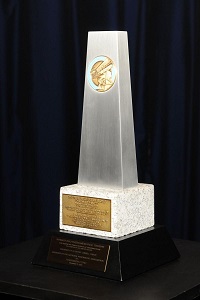 W
WThe Wright Brothers Memorial Trophy was established by the National Aeronautic Association (NAA) in 1948 after a trust fund was created in 1936 by Godfrey Lowell Cabot of Boston, a former president of the NAA. It is awarded to a living American for "significant public service of enduring value to aviation in the United States." The presentation of the award is made annually at the Aero Club of Washington, as close as possible to December 17 each year, the day on which, in 1903, the Wright brothers made the first flight in an airplane. The inaugural recipient of the trophy was William F. Durand, "a pioneer in aeronautics, naval propulsion and engineering research methods". Until 2010, winners of the award received a trophy depicting the Wright brothers' Wright Flyer aircraft. From 2010 onwards, a redesigned trophy featuring a silver obelisk and bronze inscription has been awarded.